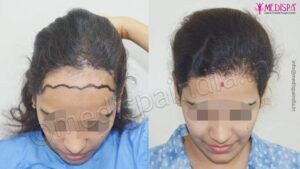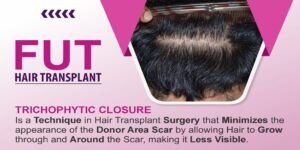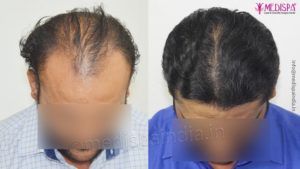
Cosmetic surgeries are gaining popularity worldwide due to the increasing demand for aesthetic enhancements. In today’s society, one’s appearance plays a significant role in personal, social, and professional success. Among the various aspects of physical beauty, a healthy hairline holds great importance.
The natural hairline refers to the area of hair that covers the front portion of the forehead. As individuals age, their hairline may recede to some extent, which is commonly known as a “mature hairline.” However, when the receding hairline becomes noticeable, it is considered as hair loss.
Both males and females have distinct hairline patterns. In males, the hairline pattern involves the frontal portion and temporal triangles, which are not present in the female pattern. In females, the temporal triangles are filled.
Within the hairline, there is a specific region known as the “extended hairline region,” which requires special attention to achieve a highly successful natural outcome. This region consists of three zones: the transition zone, the defined zone, and the frontal tuft area, each with a specific pattern of hair distribution.
Systematic steps for hair transplant procedure
Dr. Suneet Soni has shared his systematic and methodical approach to creating a natural hairline. With his exceptional artistic skills, he has gained recognition for performing the most successful hair transplant in India. In this innovative method, Dr. Soni follows a step-by-step process to design a natural hairline, ensuring that it is tailored to each patient’s specific needs. While there may be other approaches to hairline design, Dr. Soni’s method stands out as the most beneficial for his patients. The following steps outline the initial framework, which can be further adjusted or refined based on individual requirements.
- Draw the artistic hairline design:The artistic hairline design is created prior to the surgical procedure, taking into consideration various factors and the specific requirements of each patient. The marking of the anterior border, lateral border, and fronto-temporal angle is essential. The extended hairline region should include the transition zone, defined zone, and frontal tufts. If the patient desires a lower hairline, it can be achieved by incorporating a widow’s peak and slightly adjusting the fronto-temporal angle.
- Make initial incisions as per drawing of anterior border of transition zones
The initial incisions are made according to the drawing of the anterior border and transition zones. These incisions are marked approximately 1 cm apart, following an irregular zigzag pattern. Some follicular units are transplanted both anterior and posterior to the marked line, creating a desirable macro irregularity that results in a natural appearance. These initial incisions ensure that the hairline design is maintained and minimize the risk of deviating from the intended plan.
- Begin by making initial marking incisions at the fronto-temporal area:
To determine the fronto-temporal angle, utilize the existing hairs on both sides of the fronto-temporal region. These hairs serve as a guide for determining the angle and direction of the hairs to be transplanted. Use these existing hairs as landmarks and make the markings alongside them.
- After completing the markings, proceed to make the incisions in the defined zone before proceeding with any other steps in the transition zone.
Dr. Suneet Soni suggests that achieving better outcomes is possible by following an organized approach rather than a random one. Start with the defined zone before moving anteriorly to the more critical transition zone. This approach helps prevent a flat hairline, which could result in an artificial appearance.
This can be likened to painting a wall, where the central portion is painted first, followed by the outlines, resulting in a cleaner and more organized look. The incisions in the defined zones should be placed to achieve a high density of approximately 25 follicular units/cm2. Avoid a regular pattern and orientation of the follicular units, and instead opt for random placement to create unintentional skipped areas and uneven distribution of follicular units.
5. Develop the framework for designing the hairline in the transition zone.
After performing the necessary incisions in the defined zone, it is important to mark the incision ahead of it at the meeting point of the defined and transition zones. This will be followed by reaching the transition zone in a proper manner. This initial framework will consist of triangular bridges formed on either side, connecting the transition zone with the defined zone. The shape of these bridges resembles elongated triangles and contains 6-10 incisions. The base of this triangle lies in the defined zone. To achieve natural-looking results, an irregular pattern is created in the transition zone. This area has intermittent hair density, which enhances its natural appearance.
- Maintain the same pattern and basic framework while making multiple passes.
Once the framework is established, multiple passes and artistic vision are utilized for refinement. These passes are made in the “transition zones” to fill in the spaces while maintaining the pattern of irregularity. It is advisable to place more incisions within the triangles, as this provides ample hair density in those specific areas. The irregularity and estimated pattern contribute to achieving naturalness and adequate density.
- Transplant the grafts by carefully selecting them based on location and using the principle of selective distribution and follicular pairing.
As mentioned earlier, the hair follicles are transplanted based on the principle of selecting ideal grafts and, if necessary, utilizing follicular pairing.
- To achieve a natural hairline, the “stick and place method” is utilized.
After successfully transplanting the required grafts, a portion of 100-300 grafts is reserved for the final touch-up. These grafts are strategically placed in areas where they are needed to create a natural-looking hairline. The density of the hair is carefully assessed in the extended hairline region to ensure optimal results that are aesthetically pleasing. Dr. Suneet Soni is renowned for his innovative skills and approaches in designing the most desirable hairlines, which have garnered praise from both national and international patients, including celebrities. If you desire a natural hairline, we invite you to schedule an appointment with Medispa Hair Transplant Centre. Here, you will receive treatment that yields excellent results at an affordable hair transplant cost in India.







